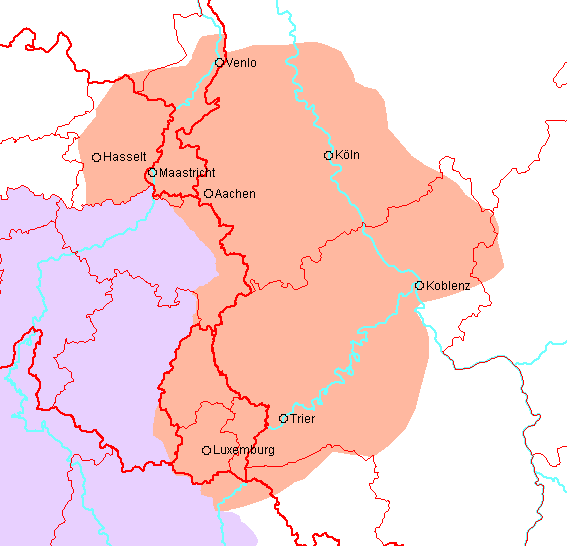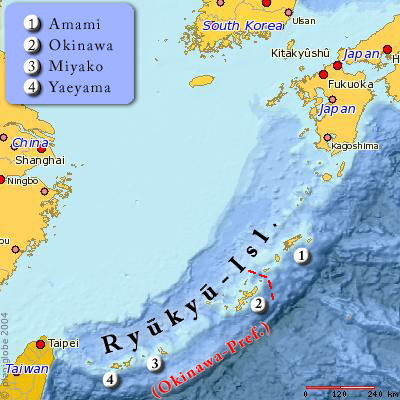|
Ryukyuan Languages
The , also Lewchewan or Luchuan (), are the indigenous languages of the Ryukyu Islands, the southernmost part of the Japanese archipelago. Along with the Japanese language and the Hachijō language, they make up the Japonic language family. Just as among Japanese dialects it is hard to understand each other, the Ryukyu and mainland Japanese languages are not mutually intelligible. It is not known how many speakers of these languages remain, but language shift toward the use of Standard Japanese and dialects like Okinawan Japanese has resulted in these languages becoming endangered language, endangered; Atlas of the World's Languages in Danger, UNESCO labels four of the languages "definitely endangered" and two others "severely endangered". Overview Phonologically, the Ryukyuan languages have some cross-linguistically unusual features. Southern Ryukyuan languages have a number of syllabic consonants, including unvoiced syllabic fricatives (e.g. Ōgami Miyako language, Miyako ... [...More Info...] [...Related Items...] OR: [Wikipedia] [Google] [Baidu] |
Japonic Languages
Japonic or Japanese–Ryukyuan () is a language family comprising Japanese language, Japanese, spoken in the main islands of Japan, and the Ryukyuan languages, spoken in the Ryukyu Islands. The family is universally accepted by linguists, and significant progress has been made in reconstructing the proto-language, Proto-Japonic. The reconstruction implies a split between all dialects of Japanese and all Ryukyuan varieties, probably before the 7th century. The Hachijō language, spoken on the Izu Islands, is also included, but its position within the family is unclear. Most scholars believe that Japonic was brought to the Japanese archipelago from the Korean peninsula with the Yayoi culture during the 1st millennium BC. There is some fragmentary evidence suggesting that Japonic languages may still have been spoken in central and southern parts of the Korean peninsula (see Peninsular Japonic) in the early centuries AD. Possible genetic relationships with many other language familie ... [...More Info...] [...Related Items...] OR: [Wikipedia] [Google] [Baidu] |
Japonic Language Family
Japonic or Japanese–Ryukyuan () is a language family comprising Japanese, spoken in the main islands of Japan, and the Ryukyuan languages, spoken in the Ryukyu Islands. The family is universally accepted by linguists, and significant progress has been made in reconstructing the proto-language, Proto-Japonic. The reconstruction implies a split between all dialects of Japanese and all Ryukyuan varieties, probably before the 7th century. The Hachijō language, spoken on the Izu Islands, is also included, but its position within the family is unclear. Most scholars believe that Japonic was brought to the Japanese archipelago from the Korean peninsula with the Yayoi culture during the 1st millennium BC. There is some fragmentary evidence suggesting that Japonic languages may still have been spoken in central and southern parts of the Korean peninsula (see Peninsular Japonic) in the early centuries AD. Possible genetic relationships with many other language families have been propo ... [...More Info...] [...Related Items...] OR: [Wikipedia] [Google] [Baidu] |
Ryukyu Islands
The , also known as the or the , are a chain of Japanese islands that stretch southwest from Kyushu to Geography of Taiwan, Taiwan: the Ryukyu Islands are divided into the Satsunan Islands (Ōsumi Islands, Ōsumi, Tokara Islands, Tokara and Amami Islands, Amami) and Okinawa Prefecture (Daitō Islands, Daitō, Miyako Islands, Miyako, Yaeyama Islands, Yaeyama, Senkaku Islands, Senkaku, Okinawa Islands, Okinawa, Sakishima Islands (further divided into the Miyako Islands, Miyako and Yaeyama Islands), and Yonaguni as the westernmost). The larger ones are mostly volcanic islands and the smaller mostly coral island, coral. The largest is Okinawa Island. The climate of the islands ranges from humid subtropical climate (Köppen climate classification ''Cfa'') in the north to tropical rainforest climate (Köppen climate classification ''Af'') in the south. Precipitation is very high and is affected by the rainy season and typhoons. Except the outlying Daitō Islands, the island chain ha ... [...More Info...] [...Related Items...] OR: [Wikipedia] [Google] [Baidu] |
Standard Japanese
is the principal language of the Japonic languages, Japonic language family spoken by the Japanese people. It has around 123 million speakers, primarily in Japan, the only country where it is the national language, and within the Japanese diaspora worldwide. The Japonic family also includes the Ryukyuan languages and the variously classified Hachijō language. There have been many Classification of the Japonic languages, attempts to group the Japonic languages with other families such as Ainu languages, Ainu, Austronesian languages, Austronesian, Koreanic languages, Koreanic, and the now discredited Altaic languages, Altaic, but none of these proposals have gained any widespread acceptance. Little is known of the language's prehistory, or when it first appeared in Japan. Chinese documents from the 3rd century AD recorded a few Japanese words, but substantial Old Japanese texts did not appear until the 8th century. From the Heian period (794–1185), extensive waves of Sino-Ja ... [...More Info...] [...Related Items...] OR: [Wikipedia] [Google] [Baidu] |
Dependent-marking
A dependent-marking language has grammatical markers of agreement and case government between the words of phrases that tend to appear more on dependents than on heads. The distinction between head-marking and dependent-marking was first explored by Johanna Nichols in 1986, and has since become a central criterion in language typology in which languages are classified according to whether they are more head-marking or dependent-marking. Many languages employ both head and dependent-marking, but some employ double-marking, and yet others employ zero-marking. However, it is not clear that the head of a clause has anything to do with the head of a noun phrase, or even what the head of a clause is. In English English has few inflectional markers of agreement and so can be construed as zero-marking much of the time. Dependent-marking, however, occurs when a singular or plural noun demands the singular or plural form of the demonstrative determiner ''this/these'' or ''that/those'' and ... [...More Info...] [...Related Items...] OR: [Wikipedia] [Google] [Baidu] |
Pitch Accent
A pitch-accent language is a type of language that, when spoken, has certain syllables in words or morphemes that are prominent, as indicated by a distinct contrasting pitch (music), pitch (tone (linguistics), linguistic tone) rather than by volume or length, as in some other languages like English language, English. Pitch-accent languages also contrast with fully tonal languages like Vietnamese language, Vietnamese, Thai language, Thai and Standard Chinese, in which practically every syllable can have an independent tone. Some scholars have claimed that the term "pitch accent" is not coherently defined and that pitch-accent languages are just a sub-category of tonal languages in general. Languages that have been described as pitch-accent languages include: most dialects of Serbo-Croatian, Slovene language, Slovene, Baltic languages, Ancient Greek, Vedic Sanskrit, Tlingit language, Tlingit, Turkish language, Turkish, Japanese language, Japanese, Limburgish, Norwegian language, No ... [...More Info...] [...Related Items...] OR: [Wikipedia] [Google] [Baidu] |
Voiceless Nasal
In phonetics, a nasal, also called a nasal occlusive or nasal stop in contrast with an oral stop or nasalized consonant, is an occlusive consonant produced with a lowered velum, allowing air to escape freely through the nose. The vast majority of consonants are oral consonants. Examples of nasals in English are , and , in words such as ''nose'', ''bring'' and ''mouth''. Nasal occlusives are nearly universal in human languages. There are also other kinds of nasal consonants in some languages. Definition Nearly all nasal consonants are nasal occlusives, in which air escapes through the nose but not through the mouth, as it is blocked (occluded) by the lips or tongue. The oral cavity still acts as a resonance chamber for the sound. Rarely, non-occlusive consonants may be nasalized. Most nasals are voiced, and in fact, the nasal sounds and are among the most common sounds cross-linguistically. Voiceless nasals occur in a few languages such as Burmese, Welsh, Icelandi ... [...More Info...] [...Related Items...] OR: [Wikipedia] [Google] [Baidu] |
Amami Language
The The name ''Amami-guntō'' was standardized on February 15, 2010. Prior to that, another name, ''Amami shotō'' (奄美諸島), was also used. is a Japanese archipelago in the Satsunan Islands, which is part of the Ryukyu Islands, and is southwest of Kyushu. Administratively, the group belongs to Kagoshima Prefecture, Japan. The Geospatial Information Authority of Japan and the Japan Coast Guard agreed on February 15, 2010, to use the name of for the Amami Islands. Prior to that, was also used. The name of Amami is probably cognate with , the goddess of creation in the Ryukyuan creation myth. Geography The Amami Islands are limestone islands of coralline origin and have a total area of approximately , of which constitute the city (''-shi'') of Amami, and constitute the district (''-gun'') of Oshima. The highest elevation is ''Yuwandake'' with a height of on Amami Ōshima. The islands have a humid subtropical climate (Köppen climate classification ''Cfa'') with very warm ... [...More Info...] [...Related Items...] OR: [Wikipedia] [Google] [Baidu] |
Glottalic Consonant
In phonetics, a glottalic consonant is a consonant produced with some important contribution (movement or closure) of the glottis. Glottalic sounds may involve motion of the larynx upward or downward, as the initiator of an egressive or ingressive glottalic airstream mechanism respectively. An egressive glottalic airstream produces ''ejective consonants'', while an ingressive glottalic airstream produces ''implosive consonants''. Ejectives are almost always voiceless stops (plosives) or affricates, while implosives are almost always voiced stops. However, when a sound is said to be '' glottalized'', this is often not what is meant. Rather, glottalization usually means that a normal pulmonic airstream is partially or completely interrupted by closure of the glottis. Sonorants (including vowels) may be glottalized in this fashion. There are three ways this can be represented in the International Phonetic Alphabet: (a) with an apostrophe; (b) with a superscript glottal stop; or ( ... [...More Info...] [...Related Items...] OR: [Wikipedia] [Google] [Baidu] |
Miyako Language
The Miyakoan language ( ''Myākufutsu/Myākufutsї'' or ''Sumafutsu/Sїmafutsї'', ) is a diverse dialect cluster spoken in the Miyako Islands, located southwest of Okinawa. The combined population of the islands is about 52,000 (as of 2011). Miyakoan is a Southern Ryukyuan language, most closely related to Yaeyama. The number of competent native speakers is not known; as a consequence of Japanese language policy which refers to the language as the , reflected in the education system, people below the age of 60 tend to not use the language except in songs and rituals, and the younger generation mostly uses Japanese as their first language. Miyakoan is notable among the Japonic languages in that it allows non-nasal syllable-final consonants, something not found in most Japonic languages. Dialects The most divergent dialect is Tarama, spoken on Tarama Island, the farthest island away. The other dialects cluster as Ikema– Irabu and Central Miyako. Given the low degree ... [...More Info...] [...Related Items...] OR: [Wikipedia] [Google] [Baidu] |




